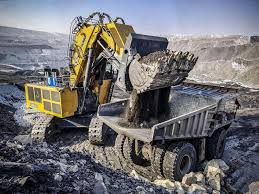
Introduction
As we move through 2024, the mining industry is experiencing a profound transformation. This year marks a period of significant evolution, driven by advancements in technology, shifts in regulatory landscapes, and an increased emphasis on sustainability. In this article, we will explore the major trends shaping the mining industry in 2024, including the latest innovations, the challenges faced, and what the future holds for this crucial sector.
Technological Advancements Shaping Mining
1. Cutting-Edge Exploration Technologies
- Remote Sensing and Satellite Imagery
The use of remote sensing and satellite imagery has revolutionized the way mining companies locate mineral deposits. These technologies provide detailed geological information from space, enabling more accurate and efficient exploration. - Advanced Drilling Techniques
New drilling technologies, such as high-precision drills and deep drilling rigs, are allowing miners to access previously unreachable resources. These advancements improve resource extraction efficiency and reduce environmental impact.
2. Automation and Robotics
- Autonomous Mining Equipment
Autonomous vehicles and machinery are becoming increasingly common in mining operations. Autonomous trucks, drills, and loaders operate without human intervention, enhancing safety and productivity while reducing operational costs. - Robotic Systems for Hazardous Environments
Robotics are being used to perform dangerous tasks in hazardous environments. Robotic systems can handle tasks such as drilling, blasting, and ore extraction, minimizing human exposure to dangerous conditions.
3. Artificial Intelligence and Data Analytics
- Predictive Maintenance
AI-powered predictive maintenance systems analyze data from mining equipment to predict potential failures before they occur. This proactive approach reduces downtime and maintenance costs, improving overall operational efficiency. - Optimized Resource Management
Data analytics and AI are used to optimize resource management by analyzing geological data and predicting the best extraction methods. This results in more efficient resource use and reduced waste.
4. Sustainable Mining Practices
- Green Energy Integration
The integration of renewable energy sources, such as solar and wind, into mining operations is becoming more prevalent. These technologies reduce reliance on fossil fuels and lower the carbon footprint of mining activities. - Waste Reduction and Recycling
Innovations in waste management are helping to reduce the environmental impact of mining. Techniques such as tailings recycling and waste-to-energy conversion are being adopted to manage and repurpose mining by-products.
Challenges Facing the Mining Industry in 2024
1. Environmental Concerns
- Ecosystem Disruption
Mining activities can disrupt local ecosystems, leading to habitat loss and water pollution. Addressing these issues requires careful planning and implementation of environmental protection measures. - Resource Depletion
As easily accessible resources become depleted, mining companies face the challenge of accessing deeper and more complex deposits. This often requires more invasive techniques and increased operational costs.
2. Regulatory and Compliance Issues
- Stricter Regulations
Governments are implementing stricter environmental and safety regulations for mining operations. Compliance with these regulations is essential to avoid fines and ensure sustainable practices. - Community Engagement
Mining companies must engage with local communities and address their concerns. Building positive relationships with local populations is crucial for maintaining social license to operate and avoiding conflicts.
3. Technological Integration
- High Implementation Costs
Adopting new technologies involves significant investment. Mining companies must balance the high costs of technology implementation with the potential long-term benefits. - Skill Gaps
The integration of advanced technologies requires a skilled workforce. Training and upskilling employees to operate new systems and manage complex technologies is a key challenge.
The Future Outlook for Mining
1. Embracing Innovation
The mining industry will continue to evolve with ongoing technological advancements. Embracing innovation will be essential for staying competitive and addressing the challenges of resource extraction.
2. Focusing on Sustainability
Sustainability will remain a central focus for the mining industry. Companies will need to prioritize environmentally friendly practices, efficient resource management, and community engagement to meet regulatory requirements and public expectations.
3. Enhancing Collaboration
Collaboration between mining companies, technology providers, and regulatory bodies will be crucial for addressing industry challenges and driving progress. By working together, stakeholders can achieve common goals and advance the industry.
Conclusion
In 2024, the mining industry is undergoing significant evolution, driven by technological advancements and a growing emphasis on sustainability. The adoption of cutting-edge exploration technologies, automation, AI, and green practices is reshaping the way resources are extracted and managed. While challenges such as environmental impact and regulatory compliance remain, the industry’s focus on innovation and sustainability offers a promising outlook for the future. As the mining sector continues to evolve, it will be essential for companies to adapt to new trends, address challenges effectively, and embrace opportunities for growth and improvement.